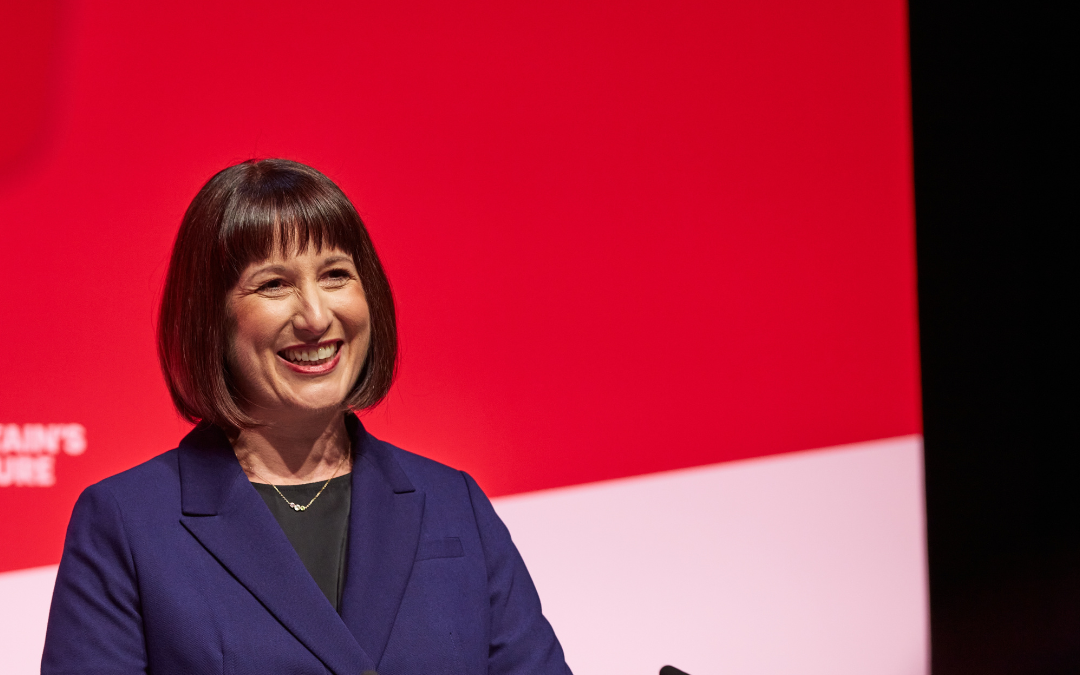Many contend that labor has not been getting its just desserts—its pay not reflecting its productivity, its share of the pie increasingly gobbled up by capital. Potential culprits include diminished worker bargaining power, labor-displacing technology, and globalization. But some sense a change in the air, a hint that the pendulum may be swinging back labor’s way as firms bid aggressively for workers amid the “Great Resignation” of the COVID economy. If true, the implications would be far-reaching, not least for inequality. Although shifts within labor (e.g., the relative pay growth of high vs. low earners) have a great bearing on inequality, the capital/labor split does as well, given that capital tends to be owned disproportionately by the affluent. But has labor really been losing out to capital? And is it set to rebound?
Measurement issues
Exhibit A for those arguing that workers have not been reaping what they sow is that real average hourly wages, which kept pace with labor productivity in the first few decades after the Second World War, have persistently lagged since the 1970s.
But this evidence is less compelling than it seems.
For starters, wages are just a subset of total labor compensation, an increasing share of which has been taking other forms, for example benefits and bonuses. Excluding them understates labor’s take.
Second, productivity metrics reflect the contributions of all labor, not just the production of workers often used in these studies, whose productivity is not measured separately.
Third, we only have rough estimates of the labor income of the self-employed, and these estimates have increasingly been muddying the aggregate data used in these studies due to the proliferation of S-corporations. Focusing on the corporate sector offers a cleaner read of the labor/capital split.
Finally, most studies use consumer prices as the deflator to derive real labor compensation. That makes sense if we want to gauge worker living standards. But it won’t tell us if workers are getting the full value they contribute to production, because that value is measured using output prices. To see if workers are gathering the fruits of their labor, we need to deflate their compensation by the same prices used to measure those fruits, namely output prices. Only on this “apples to apples” basis is comparing real labor compensation with productivity equivalent to seeing if the labor share is constant.
On that basis, real compensation has in fact lagged productivity, but the shortfall is much smaller and more recent than many studies suggest. Indeed, the labor share held up remarkably well through the end of the 20th century, only beginning to lag after 2000, and actually recovering a bit as labor markets tightened in the last few years prior to COVID.
True, when deflated by consumer prices, labor compensation has been more sluggish, because consumer prices have risen more rapidly than output prices. But that’s not a sign the labor share has declined. Faster growth in consumer prices has crimped the purchasing power of capital’s income too.
What drives the labor/capital split?
There is no immutable law of nature dictating labor and capital shares be constant. For that, three broad conditions must hold:
Markets must be competitive. This will ensure firms pay workers the full incremental value they add (for fear of losing them to other firms), and that any returns capital reaps more than its incremental value won’t last, as fresh capital rushes in and competes those excess returns away.
Labor and capital must both be needed in the production process. They must work in tandem, so that if more capital is used, labor becomes more productive (and in competitive markets, earns more).
The elasticity of substitution (EOS) between labor and capital must be one. If firms substitute capital for labor, they do so in exact proportion to the increase in the remaining labor’s incremental value relative to capital, thereby keeping labor’s share (the number of workers times each worker’s incremental value) constant.
If any of these conditions are violated, labor and capital shares will not be constant.
What might have caused labor’s share to dip?
Some argue that markets have become less competitive as firms have gained market power in the labor market, enabling them to restrain compensation without (fully) sacrificing the ability to attract and retain workers. A combination of increasing concentration of firms, globalization, declining unions, and a reduced willingness of workers to move, may have accorded firms a degree of monopsony power that has eaten into labor’s share.
Others suggest that some new types of capital (e.g., robotics, artificial intelligence) may not have to be used in tandem with labor. If workers are replaced by this kind of capital, the productivity of those remaining employed is not enhanced (as it is with traditional capital), so labor’s share declines. But history is replete with technological innovations that sparked prophesies of labor’s demise that ultimately proved unfounded (recall the Luddites). It’s not obvious why today’s technology will be different.
Even if not a pure replacement, capital may have become more easily substitutable for labor. If firms can replace labor with capital in greater proportion to any increase in the relative cost of labor (i.e., if the elasticity of substitution is greater than one), labor’s share will shrink. Though some studies find evidence of this, many don’t, and most economists hesitate to pin too much on something as fiendishly hard to measure as the elasticity of substitution (EOS).
What can be done?
If technology is the culprit, there’s little policy can do. But if labor has been losing out because markets have become less competitive, there are potential remedies. For starters, regulators may need to rethink anti-trust policy, broadening their traditional focus from consumer welfare to the impact of industry consolidation on competition in the labor market. In other areas, though, the problem may be too much regulation. Easing onerous licensing rules and reducing compliance costs might facilitate business formation, unleashing fresh sources of labor demand. Finally, monetary and fiscal policy could aim to encourage “hot” labor markets that counter whatever monopsony power firms have and tilt the playing field back toward workers. But it’s hard to know how tight labor markets can get before fostering unsustainable inflation pressures. That is a question that policy makers are grappling with right now.
Where are we headed?
Aggressive fiscal and monetary policy stimulus have certainly helped the labor market recover since COVID struck. And labor compensation has accelerated, as firms bid for scarce workers in many industries. But it’s not clear that the labor share has picked up or will. Underlying trends are too hard to discern amid the distortions induced by COVID. And perhaps the biggest unknown is inflation. Is its jump this past year a reflection of COVID-related supply disruptions, or a sign that the economy is fundamentally overheating?
Even if we knew the answer—which we don’t, at least not yet—the implications for labor would be ambiguous. If labor force participation were to remain shy of pre-COVID trends, for example, would that imply enduring labor scarcity that benefits workers, or greater inflationary pressures that endanger the recovery to the ultimate detriment of workers?
We should be cautious about proclaiming a turn in labor’s fortunes. For one, those fortunes haven’t dimmed nearly as much as some proclaim. And whatever has been weighing on them, including shifts in technology or market power, are not assuredly reversing.



